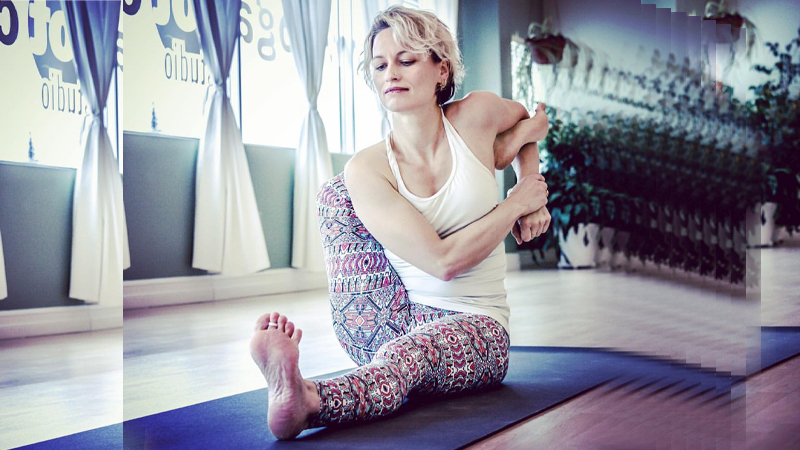
बुद्धासन अष्टांग योग की चौथी श्रृंखला में मुद्रा के लिए संस्कृत नाम है। बुद्धासन बुद्ध शब्द से बना है, जिसका अर्थ है "जागृत", और आसन, जिसका अर्थ है "आसन।"
Buddhasana is the Sanskrit name for a pose in the fourth series of Ashtanga yoga. Buddhasana is derived from the term buddha, meaning “awakened,” and asana, meaning “posture.”
To perform buddhasana, the yogi starts in dandasana, or staff pose, and brings one leg up and the thigh behind the shoulder. The opposite arm wraps over and around the foot. The hands clasp at the side with the gaze (drishti) upward.
In English, buddhasana is also known as awakened pose.
The fourth series of Ashtanga includes many advanced postures, including buddhasana, where the yogi brings the leg behind the body. A yogi is ready to attempt the fourth series, when they have mastered the primary, intermediate and third series, as they will have developed the strength, flexibility and mental endurance needed to attempt more complicated postures.
Buddhasana is the first in a series of postures that involve bringing one or both legs behind the body. In this advanced foundation pose, the yogi remains seated in an upright position while developing the ability to hold one leg behind the body, without using the hands for support, while the other leg remains extended on the floor. Breath is important in this posture; the yogi inhales as the leg rises and exhales as they bring the leg behind the body and head, holding the posture for five breaths and releasing on an exhale back to dandasana.
Aasan
- बुद्धासन
बुद्धासन अष्टांग योग की चौथी श्रृंखला में मुद्रा के लिए संस्कृत नाम है। बुद्धासन बुद्ध शब्द से बना है, जिसका अर्थ है "जागृत", और आसन, जिसका अर्थ है "आसन।"
- Log in to post comments
- 85 views
